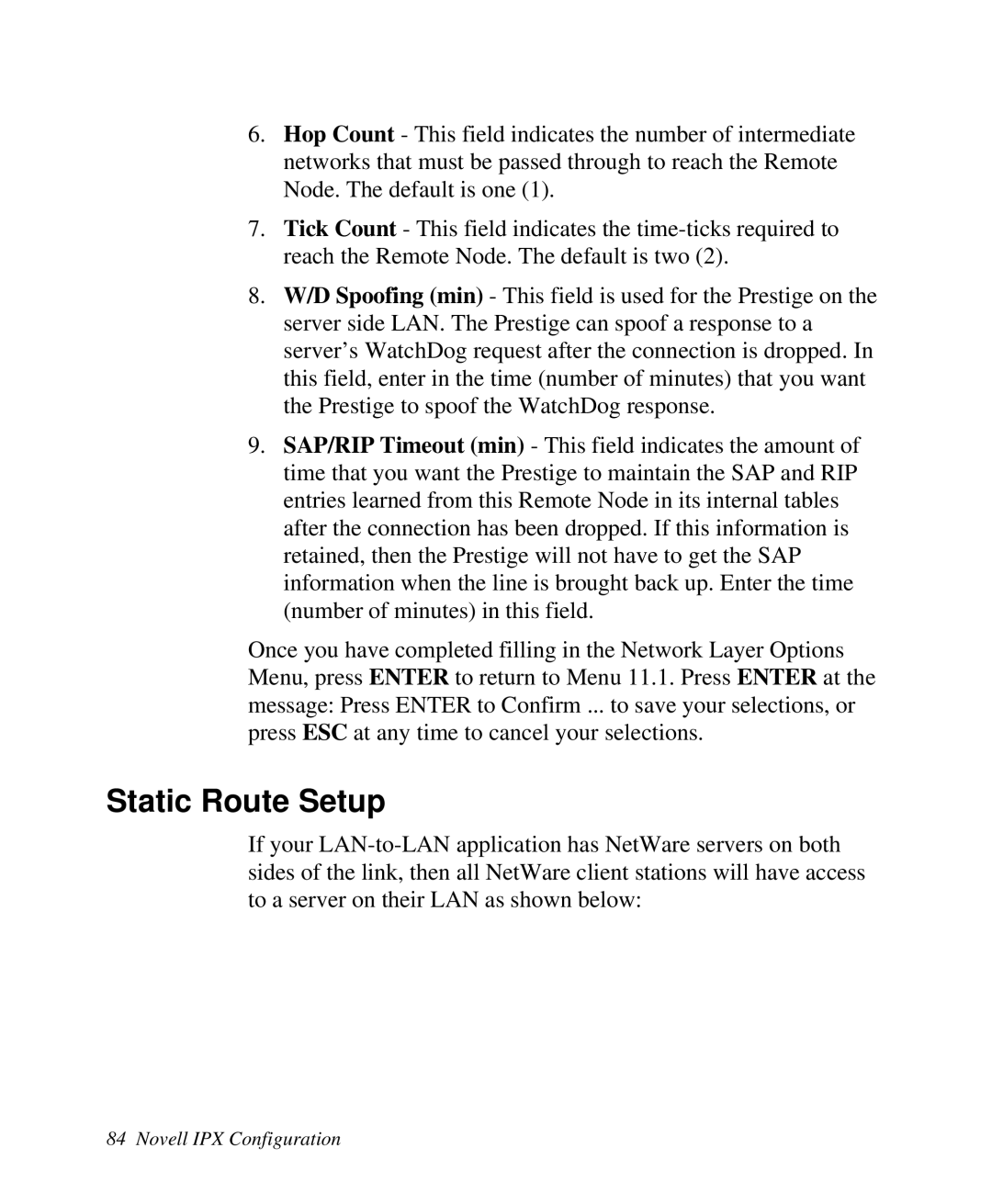6.Hop Count - This field indicates the number of intermediate networks that must be passed through to reach the Remote Node. The default is one (1).
7.Tick Count - This field indicates the
8.W/D Spoofing (min) - This field is used for the Prestige on the server side LAN. The Prestige can spoof a response to a server’s WatchDog request after the connection is dropped. In this field, enter in the time (number of minutes) that you want the Prestige to spoof the WatchDog response.
9.SAP/RIP Timeout (min) - This field indicates the amount of time that you want the Prestige to maintain the SAP and RIP entries learned from this Remote Node in its internal tables after the connection has been dropped. If this information is retained, then the Prestige will not have to get the SAP information when the line is brought back up. Enter the time (number of minutes) in this field.
Once you have completed filling in the Network Layer Options Menu, press ENTER to return to Menu 11.1. Press ENTER at the message: Press ENTER to Confirm ... to save your selections, or press ESC at any time to cancel your selections.
Static Route Setup
If your
84 Novell IPX Configuration
